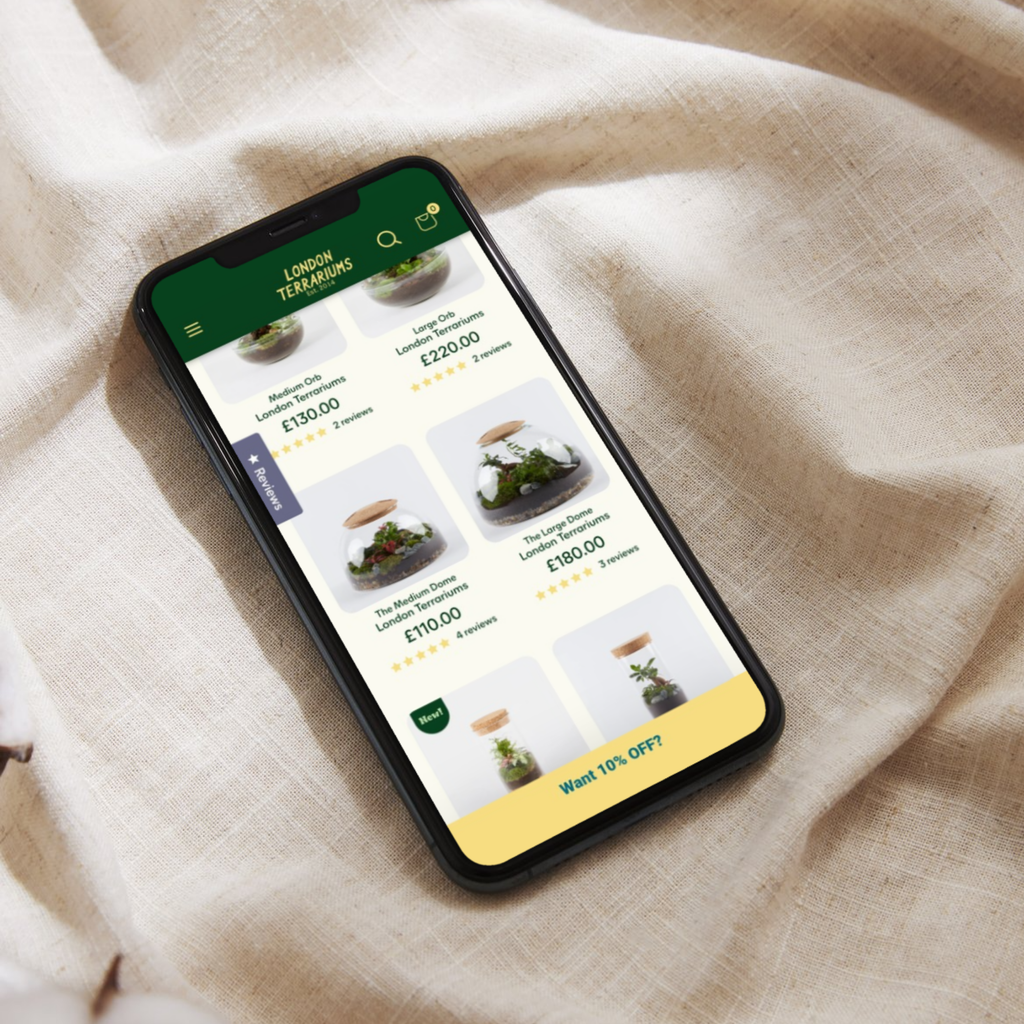15 Proven UX UI Design FEATURES Guaranteed to Boost Conversions

Ever wondered why some E-commerce websites feel like a breeze to use, while others leave you clicking around in frustration? That's the magic of UX UI design at work, and we're about to share some of our top insights.
Imagine your favourite online store, the one where you effortlessly find what you want and the whole experience feels like a breeze. Well, guess what? There's design wizardry going on behind the scenes that makes it all happen.
Join us as we check out these 15 UX UI improvements that will make any e-commerce website super user-friendly and boost conversions.
1. Clear Navigation
When you step into a physical store, clear signs and well-defined sections make your shopping experience easy. The same goes for a website. Clear navigation menus and intuitive categories help visitors find their desired products without any hassle. This eliminates frustration, enhances user satisfaction, and reduces bounce rates. By simplifying the browsing journey, clear navigation empowers visitors to discover and explore your offerings effortlessly, increasing the likelihood of conversion. According to Nielsen Norman Group, users' attention span on a website is approximately 10-20 seconds. Clear navigation ensures visitors quickly find what they need, as a confusing interface may cause them to lose interest and leave the site.
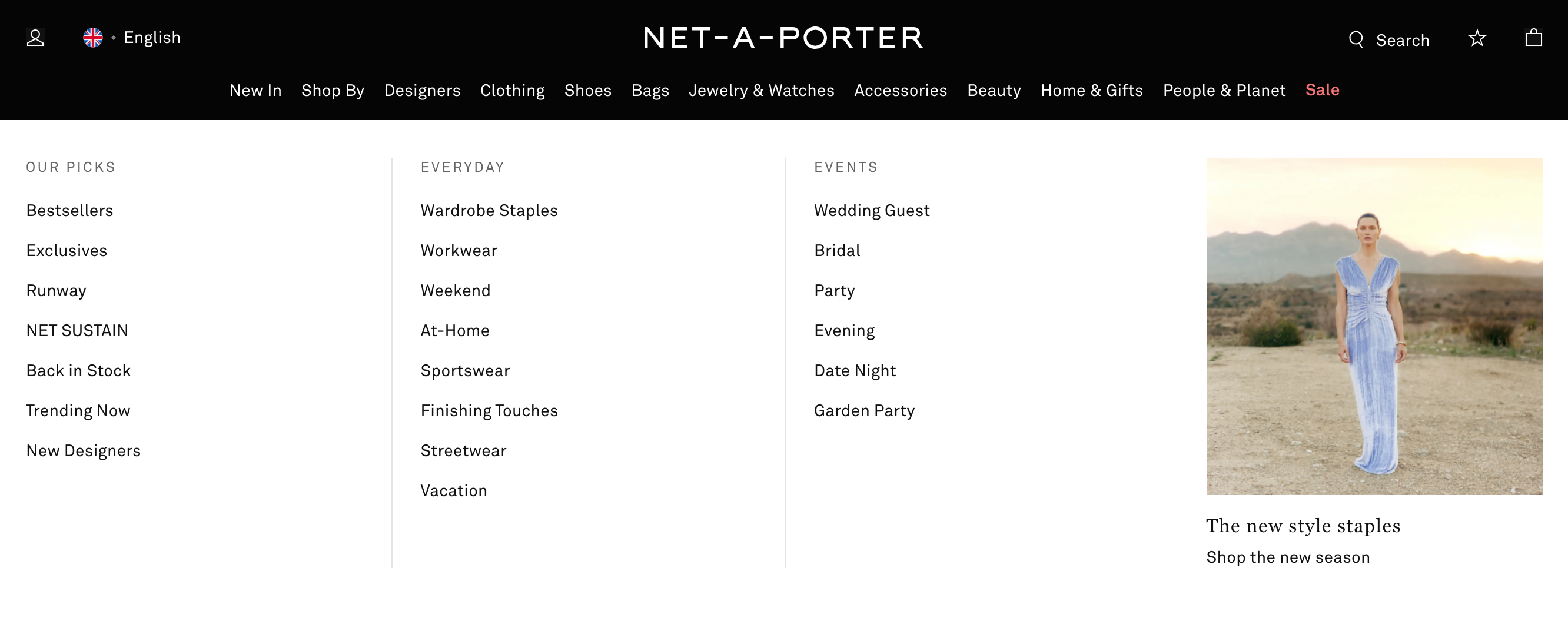
Net-A-Porter's navigation menus offer a user-friendly and organised pathway to explore their premium fashion collection with ease.
2. Responsive Design
Ever switched between devices while shopping? Responsive design ensures that your website looks and works flawlessly, whether your customers are browsing on a smartphone, tablet, or desktop. This adaptability prevents potential customers from encountering distorted layouts or difficult-to-navigate interfaces, minimising bounce rates and maximising engagement. With mobile shopping accounting for a significant portion of online purchases, a responsive design is pivotal in providing an enjoyable and effective shopping experience for all users. According to a survey by Google, 79% of users are more likely to revisit and/or share a mobile site if it is easy to use.
3. High-Quality Imagery
A picture is worth a thousand words, especially in e-commerce. High-quality imagery serves as the customer's tactile experience, enabling them to virtually inspect products from various angles. This immersive view helps build confidence and trust in the product's quality and appearance, mitigating uncertainties that often deter online purchases. By offering an accurate representation, high-quality imagery fosters a deeper connection between the customer and the product, influencing buying decisions and potentially leading to higher conversion rates. E-commerce platform Shopify reports that product images with zoom and multiple views can lead to a 9% increase in sales. Check out this article for tips on how to improve your product photography
4. Interactive Product Pages
Interactive product pages transform the digital shopping journey into an informative and engaging experience. By seamlessly integrating user reviews, sizing guides, and delivery details, these pages address common pre-purchase inquiries. Shoppers are more likely to convert when they can access comprehensive information within a single interface, building trust and streamlining the decision-making process. An eMarketer study showed that 63% of customers are more likely to make a purchase from a site that has user reviews.
5. Abandoned Cart Recovery
Automated email reminders to users who've left items in their carts, encourages them to complete their purchase and addresses potential barriers. Abandoned cart recovery is a strategic e-commerce tool that combats cart abandonment – a pervasive issue. Sending automated email reminders to users who have left items in their carts capitalizes on the power of reminders, gently nudging potential buyers to revisit their selections and complete transactions. This tactic leverages psychological triggers, reminding customers of their initial interest and addressing any potential barriers that may have hindered their purchase. As a result, abandoned cart recovery campaigns have the potential to rescue lost sales and boost overall revenue. SaleCycle's data indicates that the average global cart abandonment rate is approximately 76.9%, underscoring the potential impact of recovery strategies. This article lists 7 Abandoned cart recovery strategies to generate sales


Coco Village's effective cart abandonment emails use personalised reminders, incentives, urgency, and easy checkout options to successfully recover potential lost sales.
6. Product Bundling
Incorporating product bundling in your e-commerce strategy introduces a valuable convenience factor for shoppers. By offering options to purchase complementary items as bundles or sets, you streamline the decision-making process. This approach simplifies the shopping experience, reducing the cognitive load on customers as they find multiple related products in one go. Notably, product bundling presents an opportunity to enhance the average order value by enticing customers to invest in more items. It not only promotes cross-selling but also imparts a sense of value and savings, fostering customer loyalty and potentially boosting revenue. A study by Shopify reveals that implementing product bundles can increase the average order value by up to 60%. This article explores some great product bundling tactics
7. Browsing
The significance of an exceptional UX UI design in e-commerce is evident in the efficiency of browsing and product discovery. A well-designed interface, featuring intuitive navigation and search functionalities, empowers visitors to swiftly navigate through your product range. The ease of browsing enhances user satisfaction and reduces frustration, thereby encouraging prolonged engagement. By minimising the time and effort required to find desired items, you create a positive impression and potentially lead users towards making purchases, contributing to higher conversion rates. According to a survey by Baymard Institute, 40% of users will abandon a website if it takes more than 3 seconds to load, underscoring the importance of efficient browsing experiences.
8. Clear Calls to Action (CTAs)
The strategic placement and clarity of Calls to Action (CTAs) have a substantial influence in guiding users along the purchasing journey. These succinct prompts, such as "Add to Cart," "Buy Now," or "Sign Up," offer users a clear pathway to execute specific actions. By strategically positioning CTAs, you enhance user guidance and simplify their decision-making process. Well-crafted CTAs ensure that visitors don't encounter friction when attempting to engage with your offerings, resulting in a seamless and efficient shopping experience. This approach not only drives immediate actions but also nurtures a sense of user confidence and control over their interactions, ultimately contributing to increased conversions. This Shopify article showcases some great CTA examples
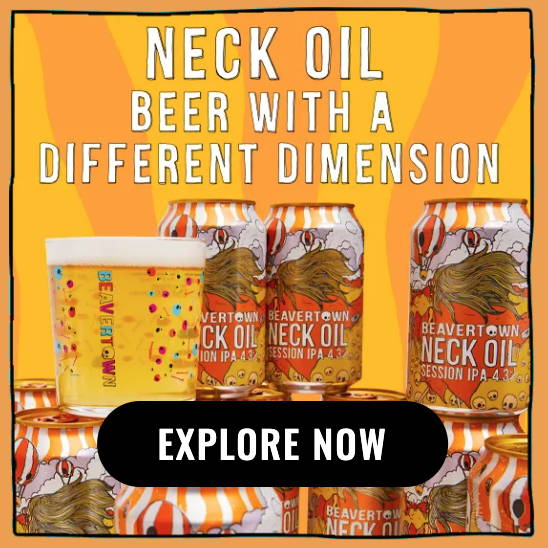

9. Social Proof Elements
In the bustling world of e-commerce, building trust and confidence among potential buyers is paramount. Social proof elements like "Best Sellers," "Popular Products," or "Trending Now" sections play a pivotal role. By showcasing products that have garnered positive feedback from other customers, you create a sense of reassurance. These elements influence the decisions of potential buyers, assuring them that they're making choices validated by the experiences of others. Such visual endorsements not only elevate the perceived value of products but also instill a sense of credibility in your brand, enhancing the likelihood of conversions. A study by BrightLocal shows that 88% of consumers trust online reviews as much as personal recommendations.
10. User-Friendly Wishlist
Including a user-friendly wishlist is a clever strategy that nurtures customer loyalty and simplifies the shopping journey. Allowing users to save items for later encourages them to return, keeping your brand on their radar. This handy feature also makes decision-making easier, letting shoppers create personalised lists of their favourite things. By improving convenience and engagement, the wishlist contributes to a positive shopping experience, paving the way for repeat business and ultimately boosting conversion rates. A Baymard Institute study found that 19% of users abandon shopping carts due to a complicated checkout process, highlighting the importance of simplified decision-making through wishlists. Here are some e-commerce wishlist examples to increase revenue
11. Secure Payment Methods
Establishing trust is central to e-commerce success. Offering a range of secure payment options, such as credit card, PayPal, or digital wallets, reassures customers about the safety of their transactions. In an environment where cyber threats are a concern, providing secure payment methods cultivates a sense of confidence. This confidence is pivotal in alleviating purchase-related anxieties, empowering customers to proceed with transactions without hesitation and contributing to higher conversion rates. According to a survey conducted by GlobalData, 75% of online shoppers worldwide stated that a secure and seamless payment process is one of the most important factors influencing their decision to complete a purchase.
12. Social Media Integration
Seamlessly integrating social media with your e-commerce platform taps into the power of word-of-mouth marketing and brand visibility. Allowing users to easily share products or their shopping experiences on social media platforms extends your brand's reach. This integration transforms satisfied customers into brand advocates, amplifying your online presence through their networks. The ability to share products and engage with your brand socially enhances discoverability and creates a sense of community, positively influencing conversion rates. A report by GlobalWebIndex indicates that 54% of online shoppers use social media to research products, showcasing the impact of social integration on brand visibility. Here is a useful guide on how to integrate social media with e-commerce
13. Loyalty Programs
Building customer loyalty is a smart long-term plan that really works in e-commerce. When you set up loyalty programs, where regular shoppers get rewards like discounts, special deals, or points for every purchase, it encourages them to come back for more. These programs make customers feel valued and important, making them want to pick your store again. By taking care of your customer relationships and making shopping fun, loyalty programs help keep more shoppers coming back, which leads to more sales happening. A study by Bond Brand Loyalty indicates that 73% of consumers are more likely to recommend brands with good loyalty programs.
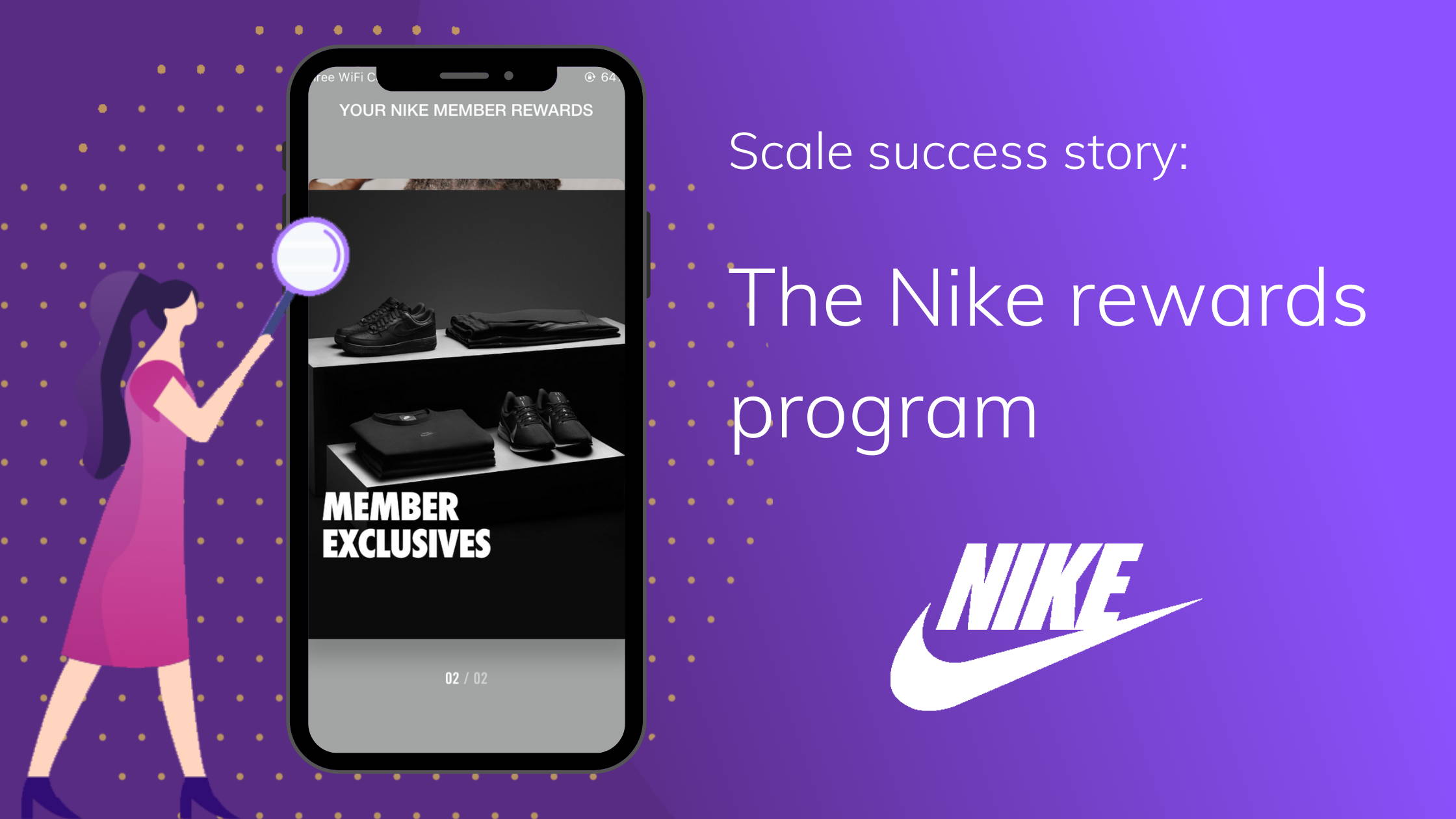
Nike membership stands out as an excellent loyalty program because it provides enticing rewards, grants you early access to new merchandise, and makes online shopping super easy, so you want to keep going back.
14. Real-Time Inventory Updates
15. Quick Loading Times
And there you go – 15 impactful UX UI enhancements that have the potential to elevate your E-commerce website from good to extraordinary. Ready to dig deeper? Drop a line to 8th Dial and let's chat about making your online shopping platform even more awesome!
If you’d like to know more, get in touch via our email info@8thdial.com or Calendly.
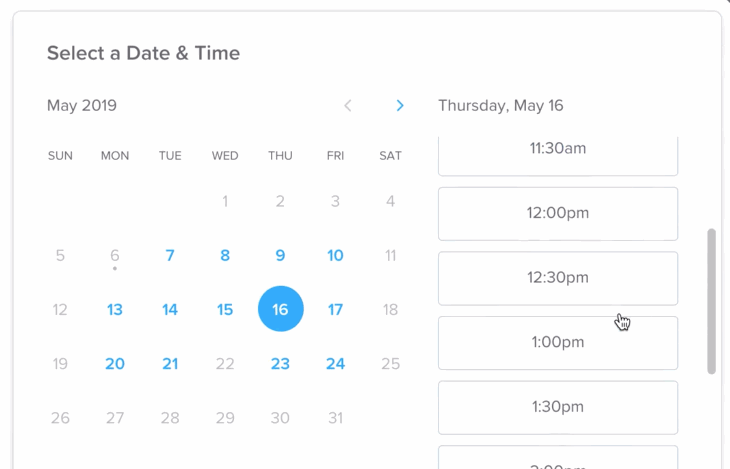
"Our expertise means we can work quickly and efficiently, leaving you to get on with the all-important task of running your business."


